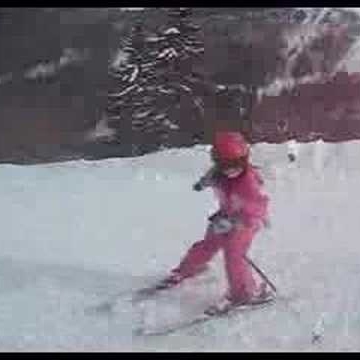Mark B Anders
age ~51
from Oakley, CA
- Also known as:
-
- Mark Brian Anders
- Mark D Anders
- Mark C Anders
- Mark B Andrews
- Phone and address:
-
22 Solitude Ct, Oakley, CA 94561
9255955671
Mark Anders Phones & Addresses
- 22 Solitude Ct, Oakley, CA 94561 • 9255955671
- 4341 Chenin Ln, Oakley, CA 94561 • 9256256275
- Easton, PA
- Oakdale, CA
- Concord, CA
- Mechanicville, NY
Medicine Doctors

Mark J. Anders
view sourceSpecialties:
Orthopaedic Surgery
Work:
University Sports Medicine InstituteUBMD Orthopaedics & Sports Medicine
462 Grider St, Buffalo, NY 14215
7162043200 (phone), 7168985743 (fax)
University Sports Medicine InstituteUBMD Orthopaedics & Sports Medicine
5959 Big Tree Rd STE 108, Orchard Park, NY 14127
7168214400 (phone), 7168292138 (fax)
462 Grider St, Buffalo, NY 14215
7162043200 (phone), 7168985743 (fax)
University Sports Medicine InstituteUBMD Orthopaedics & Sports Medicine
5959 Big Tree Rd STE 108, Orchard Park, NY 14127
7168214400 (phone), 7168292138 (fax)
Education:
Medical School
University of Wisconsin Medical School
Graduated: 1986
University of Wisconsin Medical School
Graduated: 1986
Procedures:
Arthrocentesis
Hip/Femur Fractures and Dislocations
Knee Arthroscopy
Knee Replacement
Lower Arm/Elbow/Wrist Fractures and Dislocations
Lower Leg/Ankle Fractures and Dislocations
Shoulder Surgery
Carpal Tunnel Decompression
Hip Replacement
Wound Care
Hip/Femur Fractures and Dislocations
Knee Arthroscopy
Knee Replacement
Lower Arm/Elbow/Wrist Fractures and Dislocations
Lower Leg/Ankle Fractures and Dislocations
Shoulder Surgery
Carpal Tunnel Decompression
Hip Replacement
Wound Care
Conditions:
Internal Derangement of Knee Cartilage
Osteoarthritis
Fractures, Dislocations, Derangement, and Sprains
Internal Derangement of Knee
Internal Derangement of Knee Ligaments
Osteoarthritis
Fractures, Dislocations, Derangement, and Sprains
Internal Derangement of Knee
Internal Derangement of Knee Ligaments
Languages:
English
Description:
Dr. Anders graduated from the University of Wisconsin Medical School in 1986. He works in Buffalo, NY and 1 other location and specializes in Orthopaedic Surgery. Dr. Anders is affiliated with Buffalo General Medical Center, Erie County Medical Center, United Memorial Medical Center and Women & Childrens Hospital Of Buffalo.

Mark L. Anders
view sourceSpecialties:
Anesthesiology
Work:
Anesthesia AssociatesAnesthesia Associates Colorado Spring
1400 E Boulder St, Colorado Springs, CO 80909
7195205900 (phone), 7195205925 (fax)
Printer's Park OB/GYNMemorial Outpatient Surgery
175 S Un Blvd STE 100, Colorado Springs, CO 80910
7193657000 (phone), 7193656161 (fax)
1400 E Boulder St, Colorado Springs, CO 80909
7195205900 (phone), 7195205925 (fax)
Printer's Park OB/GYNMemorial Outpatient Surgery
175 S Un Blvd STE 100, Colorado Springs, CO 80910
7193657000 (phone), 7193656161 (fax)
Education:
Medical School
Wayne State University School of Medicine
Graduated: 1993
Wayne State University School of Medicine
Graduated: 1993
Languages:
English
Description:
Dr. Anders graduated from the Wayne State University School of Medicine in 1993. He works in Colorado Springs, CO and 1 other location and specializes in Anesthesiology. Dr. Anders is affiliated with Arkansas Valley Regional Medical Center, Memorial Hospital Central and Memorial Hospital North.
Name / Title
Company / Classification
Phones & Addresses
ANDERS CONSTRUCTION, INC
Resumes

Mark Anders
view source
Mark Anders
view sourceSkills:
Microsoft Word
Financial Analysis
Powerpoint
Financial Analysis
Powerpoint

Mark Anders
view source
Mark Anders
view source
Mark Anders
view source
Mark Anders
view source
Student At High School
view sourceLocation:
United States
Industry:
Airlines/Aviation
Education:
High School 1992 - 2005
License Records
Medical Doctor
License #:
36173 - Active
Issued Date:
Jun 19, 1997
Renew Date:
May 1, 2015
Expiration Date:
Apr 30, 2017
Type:
Physician
Us Patents
-
Exposing Rich Internet Application Content To Search Engines
view source -
US Patent:7707152, Apr 27, 2010
-
Filed:Jul 29, 2005
-
Appl. No.:11/192985
-
Inventors:Eliot Greenfield - Oakland CA, US
Mark Anders - San Francisco CA, US
Sho Kuwamoto - San Francisco CA, US
Todd Rein - San Francisco CA, US -
Assignee:Adobe Systems Incorporated - San Jose CA
-
International Classification:G06F 7/00
G06F 17/00 -
US Classification:707100, 707 1, 707 3, 7071041
-
Abstract:Systems and methods which facilitate search engine discovery of and/or access to application program content are shown. Declarative code may be provided within the procedural code of a rich Internet application in order to identify various states, and their associated content, of the rich Internet application. A Web crawler may identify content associated with a rich Internet application using the foregoing information. Likewise, direct access to rich Internet application states associated with the identified content may be provided using the foregoing information. A translation module may be provided for interfacing between a Web crawler and a rich Internet application. Such a translation module may interact with the Web crawler to respond to Web crawler navigation instructions and access declarative code associated with different states of the rich Internet application, providing responsive information identifying content in a structure that is compatible with a search engine associated with the Web crawler.
-
Localized Exploded View
view source -
US Patent:7945863, May 17, 2011
-
Filed:Jul 5, 2005
-
Appl. No.:11/175114
-
Inventors:Dexter Reid - San Francisco CA, US
Narciso B. Jaramillo - San Francisco CA, US
Mark Anders - San Francisco CA, US -
Assignee:Adobe Systems Incorporated - San Jose CA
-
International Classification:G06F 3/048
G06F 3/00
G09G 5/00 -
US Classification:715797, 715762, 715763, 715767, 345651, 345660, 345665, 345671
-
Abstract:A method for providing an Integrated Development Environment comprises receiving input from a user identifying an area containing an edge shared by two or more objects, wherein the shared edge includes two or more individual edges corresponding to the objects, and visibly separating the two or more individual edges in a localized exploded view responsive to the receiving.
-
Systems And Methods For Specifying States Within Imperative Code
view source -
US Patent:7949991, May 24, 2011
-
Filed:Jul 29, 2005
-
Appl. No.:11/194118
-
Inventors:Sho Kuwamoto - San Francisco CA, US
Eliot Greenfield - Oakland CA, US
Mark Anders - San Francisco CA, US -
Assignee:Adobe Systems Incorporated - San Jose CA
-
International Classification:G06F 9/44
-
US Classification:717100
-
Abstract:Systems and methods which implement declarative language for specifying states within imperative code are shown. According to embodiments an application program developer declaratively identifies one or more states within the imperative code of the application program. Declarative language identifying a particular state of an application program may both operate to identify the state and to describe the state so that the state may be selected or “jumped to” without a user having to navigate the application program flow to arrive at the state. Particular states may be described using a difference or “delta” between the particular state and another state, such as a base state. Transitions may be implemented between states, such as to provide animation, fading, color change, et cetera.
-
Exposing Rich Internet Application Content To Search Engines
view source -
US Patent:8280884, Oct 2, 2012
-
Filed:Mar 3, 2010
-
Appl. No.:12/716390
-
Inventors:Eliot Greenfield - Oakland CA, US
Mark Anders - San Francisco CA, US
Sho Kuwamoto - San Francisco CA, US
Todd Rein - San Francisco CA, US -
Assignee:Adobe Systems Incorporated - San Jose CA
-
International Classification:G06F 7/00
G06F 17/30 -
US Classification:707736, 707721, 707754, 707767
-
Abstract:Systems and methods which facilitate search engine discovery of and/or access to application program content are shown. Declarative code may be provided within the procedural code of a rich Internet application in order to identify various states, and their associated content, of the rich Internet application. A Web crawler may identify content associated with a rich Internet application using the foregoing information. Likewise, direct access to rich Internet application states associated with the identified content may be provided using the foregoing information. A translation module may be provided for interfacing between a Web crawler and a rich Internet application. Such a translation module may interact with the Web crawler to respond to Web crawler navigation instructions and access declarative code associated with different states of the rich Internet application, providing responsive information identifying content in a structure that is compatible with a search engine associated with the Web crawler.
-
Systems And Methods For Specifying States Within Imperative Code
view source -
US Patent:8286126, Oct 9, 2012
-
Filed:May 9, 2011
-
Appl. No.:13/103166
-
Inventors:Sho Kuwamoto - San Francisco CA, US
Eliot Greenfield - Oakland CA, US
Mark Anders - San Francisco CA, US -
Assignee:Adobe Systems Incorporated - San Jose CA
-
International Classification:G06F 9/44
-
US Classification:717100
-
Abstract:Systems and methods which implement declarative language for specifying states within imperative code are shown. According to embodiments an application program developer declaratively identifies one or more states within the imperative code of the application program. Declarative language identifying a particular state of an application program may both operate to identify the state and to describe the state so that the state may be selected or “jumped to” without a user having to navigate the application program flow to arrive at the state. Particular states may be described using a difference or “delta” between the particular state and another state, such as a base state. Transitions may be implemented between states, such as to provide animation, fading, color change, et cetera.
-
User Interfaces, Methods, And Systems For Developing Computer Applications Using Artwork
view source -
US Patent:8417728, Apr 9, 2013
-
Filed:Sep 30, 2008
-
Appl. No.:12/242052
-
Inventors:Mark Anders - San Francisco CA, US
Adam Cath - San Francisco CA, US
Narciso B. Jaramillo - Piedmont CA, US
Allan Padgett - Seattle WA, US -
Assignee:Adobe Systems Incorporated - San Jose CA
-
International Classification:G06F 7/00
G06F 17/30
G06F 12/00
G06F 15/16
G06F 3/048 -
US Classification:707793, 707899, 715763
-
Abstract:Methods and systems for using artwork to develop computer applications in ways that preserve the artwork's appearance and layout, including by importing the artwork and selectively replacing potions with functional components. One embodiment comprises a method for developing an application that involves displaying artwork in a design view area. The method may involve displaying artwork comprising a list representation comprising a plurality of list item representations and identifying each list item representation as a group of one or more subitem representations. The method may further comprise determining a list layout for list items using the list item representations of the artwork and inserting a list as a component in the design view area. This list may determine or otherwise be used to determine the positions of either the list item representations or list items replacing the list item representations. These positions may be determined based on the list layout that was determined.
-
Parameterizing Animation Timelines
view source -
US Patent:20130127877, May 23, 2013
-
Filed:Feb 28, 2011
-
Appl. No.:13/036294
-
Inventors:Mark Anders - San Francisco CA, US
James W. Doubek - Sunnyvale CA, US
Joshua Hatwich - San Francisco CA, US -
International Classification:G06T 13/00
-
US Classification:345474
-
Abstract:Methods and systems for parameterizing animation timelines are disclosed. In some embodiments, a method includes displaying a representation of a timeline configured to animate a first image in a graphical user interface, where the timeline includes a data structure having one or more commands configured to operate upon a first property of the first image. The method also includes creating a parameterized timeline by replacing a reference to the first image within the timeline with a placeholder. The method includes, in response to a request to animate a second image, storing an entry in a dictionary of key and value pairs. The method further includes animating the second image by replacing the placeholder in the parameterized timeline with the reference to the second image during execution of the parameterized timeline.
-
Controlling The Structure Of Animated Documents
view source -
US Patent:20130132818, May 23, 2013
-
Filed:Jun 3, 2011
-
Appl. No.:13/153114
-
Inventors:Mark Anders - San Francisco CA, US
Joshua Hatwich - San Francisco CA, US
James W. Doubek - Sunnyvale CA, US -
International Classification:G06F 17/00
-
US Classification:715234
-
Abstract:Methods and systems for controlling the structure of animated documents are disclosed. In some embodiments, a method includes displaying, via a graphical user interface, a representation of a document, where the document includes a programmatic component configured to create an animation by manipulating a structure of the document, a static structure of the document corresponds to the structure of the document when the animation is not performed, and the animation, upon execution, is rendered starting from an original base state that at least partially defines the static structure. The method also includes, in response to receiving a selection corresponding to a state of the animation, designating the selected state as a new base state, wherein the new base state is different from the original base state. The method further includes altering the static structure of the document to correspond to the new base state.
News

Adobe sharpens Edge for advanced HTML
view source- "Interactivity is the most requested functionality thus far," said Mark Anders, the Adobe fellow who leads the Edge project. With it, Edge changes from a tool that essentially spruces up a page as it loads into one that changes as people use it.
- Date: Oct 05, 2011
- Category: Sci/Tech
- Source: Google

Mark Anders
view source
Mark Anders
view source
Mark Anders
view source
Mark Dennis Anders
view source
Mark Anders
view source
Mark Anders Lepik
view source
Mark Anders
view source
Mark Anders
view sourceYoutube
Plaxo

Mark Anders
view sourceForklift Associates
Classmates

Mark Anders
view sourceSchools:
Ouachita Christian High School Monroe LA 1984-1987
Community:
Paul Crews, Jason Stamper

Mark Anders
view sourceSchools:
Weimar High School Weimar TX 1969-1973
Community:
Amy Alford, Irma Rosales, Eugene Rhemann

Mark Anders
view sourceSchools:
John S. Irwin Elementary School Ft. Wayne IN 1966-1968, Will Beckley Elementary School Las Vegas NV 1968-1969, Saint Anne School Las Vegas NV 1969-1974
Community:
Dennis Brough, Cricket Lopuch

Mark Anders
view sourceSchools:
Mayo High School Rochester MN 1976-1980
Community:
William Blanchard, James Allhiser, Sharon Anderson, Dan Vagt, Arnold Olson, Troy Schliem, Michael Brotherton, Cheryl Earles, Todd Hein, Holly Brandt, Peggy Braun

Mark Anders, T.S.U | Hous...
view source
Weimar High School, Weima...
view sourceGraduates:
Mark Anders (1969-1973),
Paul Rodgers (1970-1974),
Joe Mayorga (1980-1984),
Diane Arnold (1979-1983),
Anniken Skagseth (2000-2004)
Paul Rodgers (1970-1974),
Joe Mayorga (1980-1984),
Diane Arnold (1979-1983),
Anniken Skagseth (2000-2004)
Myspace
Flickr
Googleplus

Mark Anders
Work:
UTSA - Laser Cutter Technician (2011-2012)
Education:
University of Texas at San Antonio - Architecture

Mark Anders
About:
Retired bank CEO from Maryland
Tagline:
Living the Life in Hilton Head
Bragging Rights:
Father of two great kids, Hanns and Kendell.

Mark Anders
Bragging Rights:
Perfect score (800) on math SAT! Have been to all 50 states

Mark Anders

Mark Anders

Mark Anders

Mark Anders

Mark Anders
Get Report for Mark B Anders from Oakley, CA, age ~51

















